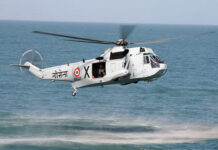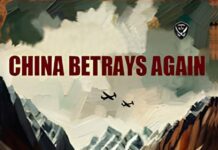By a Cabinet decision in the 1965 War, the Indian Navy had been ordered not to cross North of the Porbunder latitude and not take on the Pakistan Navy unless attacked. It was that decision, which made Admiral SM Nanda, who was Chief of the Naval Staff in 1971, resolve that should war come, the Indian Navy would not be found wanting and would foray to the gates of the enemy.
In the fourteen-day Indo-Pak War of 1971the Indian Navy came of age, attacked Karachi twice and sank five ships, kept the Pakistan Navy at bay and captured two Pakistani merchant ships, though it lost INS Khukri, which sank to INS PNS Hangor’s torpedo attack with loss of 194 lives just off Diu. An Alize which was on an EW mission was shot down on with Lt Cdr Aku Roy in Kutch sea area. In the East, Navy wrote a new chapter of naval warfare and contributed to the hastened surrender by Pakistani forces.
When prime minister Indira Gandhi gave directions to the three Service chiefs – Gen SHFJ Manekshaw, Admiral SM Nanda and Air Chief Marshal PC Lal – to make preparations for war in earnest, the ‘War Book’ was updated, logistics beefed up and exercises undertaken, with simulated plans of attack in war. The operational orders were put in place and the Armed Forces practiced drills in conjunction. The co-ordination between the Chiefs with Manekshaw and the Government was the best India ever seen. Manekshaw donned and acted like a de facto Chief of Defence Staff. Mrs Gandhi reposed faith in him and this was key to the victory that followed.
The Navy practiced anti-submarine warfare and sent submarines for patrols off the Pakistan coast. It exercised missile attacks against Karachi with the newly acquired Osa-class boats with40 km-range missiles and excellent homing nose radars. The Osas possessed the Rangout radars which when switched on ‘High Power’, could get ranges of over 35 km. The boats lacked range but the Navy devised means to tow them to long distances with nylon tow ropes. The Navy arranged to fuel the boats in forward positions on the West Coast at Porbunder and Okha.
Dawn broke on 3 December like any other, with tension in the air. That evening witnessed the beginning of a new chapter in Indian history. Pakistani Air Force fighters struck at seven major air fields – Srinagar, Avantipur (Kashmir), Amritsar, Pathankot, Ambala (Punjab) Barmer and Jodhpur (Rajasthan) – between 1740 and 1810 hours just after dusk, hoping to cripple the Indian Air Force on the ground. But the Indian aircraft had been well dispersed, and only slight damage was caused. At 1830 hours, the Pakistani armoured forces and infantry crossed the cease-fire line in Kashmir in the Poonch sector and 11 border posts in Kashmir and Punjab were heavily shelled. Mrs Gandhi spoke to the nation by radio and announced that the country was at war with Pakistan.
The signal message from Chief of Naval Staff Admiral SM Nanda released at the outbreak of hostilities was clear: “Pakistan has committed an unprovoked aggression against us and our defence services have been ordered to meet this challenge with full courage and determination. My objective is to seek and destroy Pakistani lines of communication and, along with the sister Services, inflict the maximum damage on the enemy war machine.
I expect all officers, sailors and civilians in the Navy to do their duty and act according to the best traditions of our great Service. No sacrifice should be too much for us. Let us write a new and glorious chapter in the history of our Service”.
The Western Fleet was at sea ready for battle. Apparently, the Pakistani Fleet failed to come out which confused the Indian Fleet Commander, Rear Admiral Chandy Kuruvilla. The C-in-C Western Naval Command, Vice Adm S.N. Kohli opened his war orders and set in motion the attack on Karachi. The Western Fleet, with a missile boat should have been going towards Karachi as practiced, but the Fleet felt it had been located and got sidetracked into intercepting merchant ships and began a hunt for the Pakistan Fleet. By happenstance, Hunters from the OCU Jamnagar under Wing Cdr Pete Wilson attacked Karachi on 4 December morning and set the Kemari oil tanks on fire.
On 3rd night, INS Kiltan (Cdr Gopal Rao) was given command of a force with INS Katchall (Cdr K.N. Zadu) and ordered to close up with INS Nirghat (Lt Cdr I.J. Sharma), INS Nipat (Cdr Babru Yadav, K-25, Lt Cdr B.N. Kavina) and INS Veer (Lt Cdr O..P. Mehta). They were then put on their way to Karachi under shore control in Operation Trident. C-in-C Kohli was seen in the Maritime Operations Room at Bombay, fingers crossed, having let his killer dogs loose on Karachi with no air cover.
With speed in excess of 28 knots, the Osa missile boats, which offer minimum radar targets, approached Karachi in darkness after releasing tow and launched their Styx missiles on the enemy ships. Pakistani officers on duty in the control room at Karachi failed to realize that it was a seaborne attack. Assuming it was an air attack, the Pakistan defenders were confused, mesmerized and utterly in disarray to arrange for seaward defence. In the biggest naval battle since the Second World War, this Indian Task Force sank the Pakistani destroyers Khaibar (formerly HMS Cadiz) under Capt Naseem Malik, the minesweeper Muhafiz and a merchant ship off Karachi in the late hours of 4 December. One missile was fired landward.
Missile warfare entered the world’s naval vocabulary. All Indian commanding officers were decorated for their heroic sortie, which will long be remembered for it earned the Navy two Maha Vir Chakras and four Veer Chakras. 4 December is celebrated as Navy Day.
Not one of the Indian units which attacked Karachi received the slightest damage in the first major naval battle fought by the Indian Navy since Independence. What largely contributed to the big victory was the “daring and perfectly timed action” of the units of the Western Naval Command. Times London reported “Independent observers with long enough memories have compared the operation of 4/5 December with the sinking of British warships, Prince of Wales and Repulse by the Japanese off Singapore in 1941. The two fleets of the Indian Navy have bagged more than two warships but the kill is not as important as the element of surprise involved in the operations and the sense of shock it must have caused to the enemy”.
Operation Python
On 8 December, whilst the Fleet was still to flex its muscles, the second raid on Karachi was let loose in Operation Python. INS Trishul (F15, Captain K.M.V. Nair) and INS Talwar (Cdr. S.S. Kumar) were ordered to rendezvous with the missile boat INS Vinash (Lt Cdr Vijay Jerath) and proceed for a strike on Karachi. The missile attack sank one ship and set the Kemari oil tanks again on fire. There was euphoria in the Indian Navy, But, on 9 December, while the officers and men on board INS Khukri were tuned in to listen to the All India Radio news at 8.50 pm on the ship’s SRE (Sound Reproduction Equipment), while on an anti-submarine warfare mission to look out for a reported Pak submarine, the ship was hit by more than one torpedo, possibly two, fired from one of Pakistan Navy’s three newly acquired Daphne-class submarines, the Hangor (Cdr A. Tasneem) about 40 miles off Diu Head. Eighteen officers and 176 sailors perished as INS Kirpan nearby in company left the area to return with forces for rescue next day. In command of INS Khukri was Captain Mahendra Nath Mulla a 45-year old tall, strapping royal Navy-trained anti-submarine warfare specialist with earlier command experience of destroyer INS Rana and Second-in-Command of INS Krishna (the Kistna). One can picture him on the bridge of his ship, after realizing that there was no hope and forced to give the order “Abandon Ship’.
A famous broadcaster announced the sinking, saying “Captain Mulla was seen smoking a cigarette and gave his life jacket to another in the highest traditions of navies.”
Admiral SM Nanda issued a signal that officers must not go down with ships but return to fight another day with the experience.


















